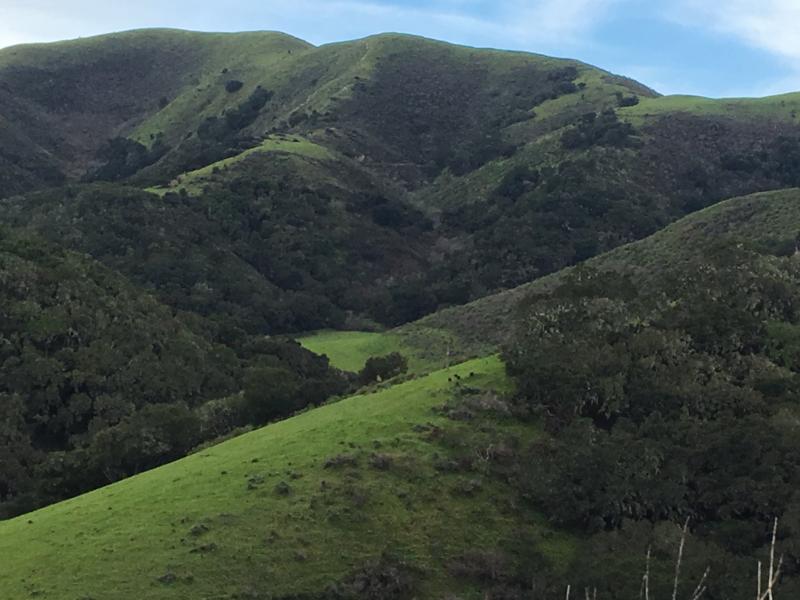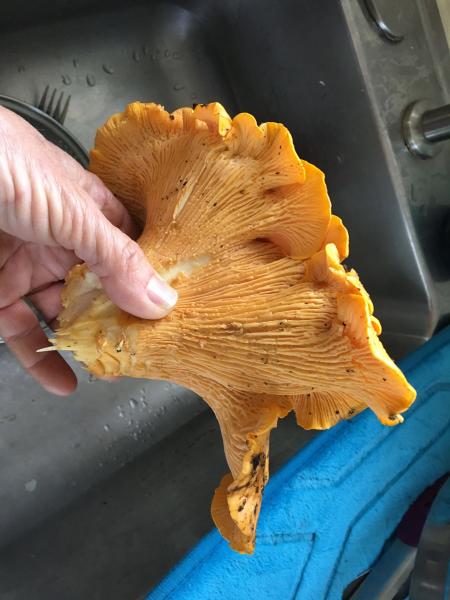California Foraging
California Foraging
By Cathy Chambers
Finally it is raining in California. Today I will see whether or not the mycelium have survived the drought. I watch the land, and wonder if climate change has gone too far, if we have ruined the balance of nature. I wonder if the land will stop giving the gift of wild food. I’ve not seen mushrooms in the oaks (Quercus kelloggii) where I used to for a long time, and I know its just been much too dry over the last few years for the fungus to get anything done under the soil and leaves. Our oak trees are struggling, some succumbing to disease and others just too dry and falling over. I wonder if there will be no more acorns, no more mushrooms, no more wild strawberries (Fragaria fesca).

This last fall, there were acorns. Enough that I was able to gather them, dry them, grind them in the coffee grinder, and leach the flour in my coffee filter. I added the flour to some cookie mix and served the cookies at our Native Plant Society banquet potluck here in Morro Bay. They were delicious and everyone loved them and wanted the recipe, so I told them to just grind the acorns to powder, leach in a coffee filter by slowly pouring about 2 gallons of warm water through until they no longer taste bitter, then substitute for a cup of flour in your favorite cookie recipe. I try to gather them every year as I was taught, to carry on the tradition and connection to the land.

The author, celebrating a successful foraging trip.
Now its been raining a lot more this winter, and if the organisms are still alive underground I should be able to find some delicious mushrooms to eat. My friends have found many already, and given me some. But there’s something different about finding them myself. For me, it is an affirmation that my relationship with the land is still OK, even though I drive a car and participate in this culture that is so destructive to the land. I do try to live lightly on the land, and work to teach others to do so. But most importantly, I spend A LOT of time on the land, appreciating and loving it. I heard on the radio recently the idea that “Not only do we love our garden, but our garden loves us.“ This immediately made me think of my relationship to the land. Of course we love the land and the land loves us too. I feel this even more when the land gives me the acorns, or the mushrooms, or the basket weaving rush (Juncus textilis).
Yesterday, something special happened and I felt very loved! I had been thinking of writing this blog. I had gone out with my friend the day before and taken a couple of pictures of Candy Caps (Lactarius rubidus), but there were not many other mushrooms, and not enough to gather to eat. But then I was thinking that I also needed pictures of the cooking and preparing of them, which I did not have. My article just wasn’t coming together. It had been raining and cold when I woke up, but I really needed to get outside for a while, by myself. So I decided to go running up a road nearby, where I like to gather basket materials, and visit the creek. Today, it was a convenient spot, close to where I had stayed the night. It was becoming a beautiful morning with just a light rain. As I was running, I decided to glance under the oaks nearby, and suddenly I saw the familiar bright yellow color coming up through the leaves. I had not found Chanterelles (Cantharellus californicus) in many years, but there they were!

Cantharellus californicus
They had been there all through the drought, underground, waiting for a rainy winter. What a wonderful gift! I got my pictures, and I made a cashew cream of mushroom soup, enough for my friend to eat as well. It was absolutely delicious. Most importantly, I realized that the mushrooms survived the drought, and the land still loved me. In a couple of months, I will look for the wild strawberries.

To prepare the mushrooms: Wash thoroughly, chop into pieces, dry sauté in a hot pan without oil, but with a little salt until the juices are rendered and then cooked off. Then add some butter and sauté a bit longer. They are ready to add to a favorite dish or add a little garlic and enjoy them on their own.
Cathy Chambers is a naturalist for the Kern County Superintendent of Schools in California. She has been teaching children about ecology, plants and their native uses for over 20 years. She holds a bachelors degree in Anthropology from the University of California, San Diego with an emphasis in Native American Studies. She has been active in the California Native Plant Society. She has been volunteering at the herbarium at the California Polytechnic State University in San Luis Obispo, both curating and mentoring Ethnobotany students for over 5 years.


Comments (2)